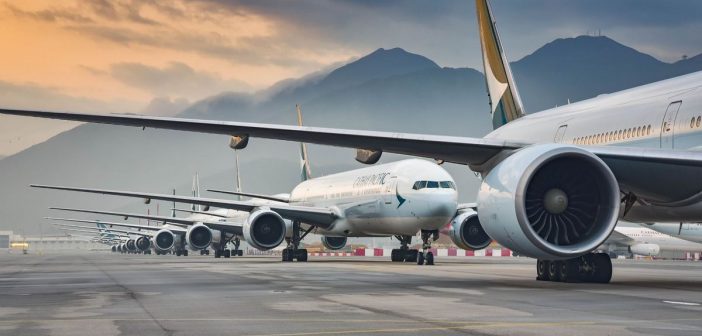The UDAN (Ude Desh Ka Aam Nagrik) Scheme, launched in 2017, has been a significant step in improving India’s regional air connectivity by making air travel affordable and accessible for underserved and unserved regions. With over 2.8 lakh flights flown under the scheme and 1.43 crore passengers served, UDAN has played a crucial role in democratizing air travel in India.
Overview of the UDAN Scheme
The Regional Connectivity Scheme (RCS), commonly referred to as UDAN, was initiated by the Government of India as part of the National Civil Aviation Policy. The primary objective is to boost regional air connectivity by incentivizing airlines to operate flights on routes that were either previously unserved or underserved. The scheme operates through a Viability Gap Funding (VGF) mechanism, which subsidizes airlines to keep ticket prices affordable for common citizens, with the fare cap set at ₹2,500 for a one-hour flight.
Achievements of the UDAN Scheme
As of October 2024, the UDAN scheme has completed over 2.8 lakh flights since its inception. These flights have connected various tier-2 and tier-3 cities, expanding air travel access to more than 475 routes across the country. The scheme has been instrumental in fostering growth in tourism, trade, and overall regional development by connecting previously isolated locations to major cities.
Key highlights include:
- 1.43 crore passengers have benefited from the scheme, many of whom were first-time flyers.
- The scheme has led to the operationalization of 75 new airports, heliports, and water aerodromes across India, including previously underserved locations like Shivamogga (Karnataka) and Darbhanga (Bihar).
Airlines Participating in UDAN
Several domestic carriers have embraced the UDAN scheme, contributing to its success by expanding their services to remote destinations. Some of the prominent airlines participating under the UDAN scheme include:
- Star Air: Known for its focus on regional connectivity, Star Air operates on several UDAN routes connecting cities like Bengaluru, Belagavi, Surat, and Ajmer. The airline has actively used smaller aircraft, such as the Embraer ERJ-145, to service less congested airports.
- IndiGo: As India’s largest carrier, IndiGo has been one of the leading participants in the scheme, offering flights under UDAN to cities like Kanpur, Gorakhpur, and Pantnagar. Its large fleet of ATR 72 aircraft is well-suited for short-haul regional routes.
- Alliance Air: A government-owned subsidiary of Air India, Alliance Air has been instrumental in flying to remote and difficult terrains, especially in the northeastern states like Shillong, Dibrugarh, and Tezpur. It operates smaller aircraft, such as the ATR 42 and ATR 72, which are ideal for regional operations.
- SpiceJet: SpiceJet has aggressively expanded under UDAN, serving cities like Jaisalmer, Porbandar, and Kandla. The airline operates Bombardier Q400 aircraft, making it suitable for short takeoff and landing on smaller runways.
- Air India Express: Although more focused on international routes, Air India Express has made strategic inroads into regional connectivity, especially in southern India, offering affordable flights to cities like Mysuru and Salem.
- FlyBig: A relatively new player, FlyBig operates primarily on northeastern and central Indian routes, with services connecting cities like Agartala, Imphal, and Gwalior.
- TruJet: TruJet has also participated actively in the UDAN scheme, flying to tier-3 cities like Cuddapah, Mysuru, and Salem. The airline operates ATR 72 aircraft suited for smaller airports.
Key Routes and Regional Benefits
The UDAN scheme has opened up air travel to remote and strategically important regions across India. Some notable routes include:
- North-East Focus: States like Assam, Manipur, and Meghalaya have significantly benefited from UDAN, improving connectivity in otherwise challenging terrains. New airports such as Pakke-Kessang (Arunachal Pradesh) and Tezu have become operational.
- Hilly States: UDAN has enabled air travel to remote hilly regions of Himachal Pradesh and Uttarakhand, with flights operating to cities like Kullu, Dharamshala, and Pantnagar, improving tourism and medical travel in these areas.
- Western and Central India: The scheme has enhanced access to industrial hubs and tourist locations like Ajmer, Jaisalmer, Kolhapur, and Jalgaon, encouraging economic growth and investments in tier-2 and tier-3 cities.
Challenges and Future Plans
Despite its success, the UDAN scheme faces challenges, including financial constraints on certain routes due to lower passenger loads. Airlines have expressed concerns about sustaining profitability without the Viability Gap Funding, especially on less frequented routes. Moreover, infrastructure challenges at smaller airports, such as runway limitations and lack of ground facilities, have posed hurdles for seamless operations.
However, the government remains committed to expanding the scheme and recently announced the development of 50 new airports over the next few years to accommodate growing demand. Additionally, there are plans to improve heliport services in remote regions like the Northeast and Ladakh to further boost air travel.
Conclusion
The UDAN scheme has transformed regional air connectivity in India, bringing millions of passengers closer to air travel while boosting economic growth in smaller cities. With sustained efforts to address its challenges and expand infrastructure, UDAN is poised to continue driving the next phase of India’s aviation sector growth, making flying truly accessible to the “aam aadmi” (common man).





